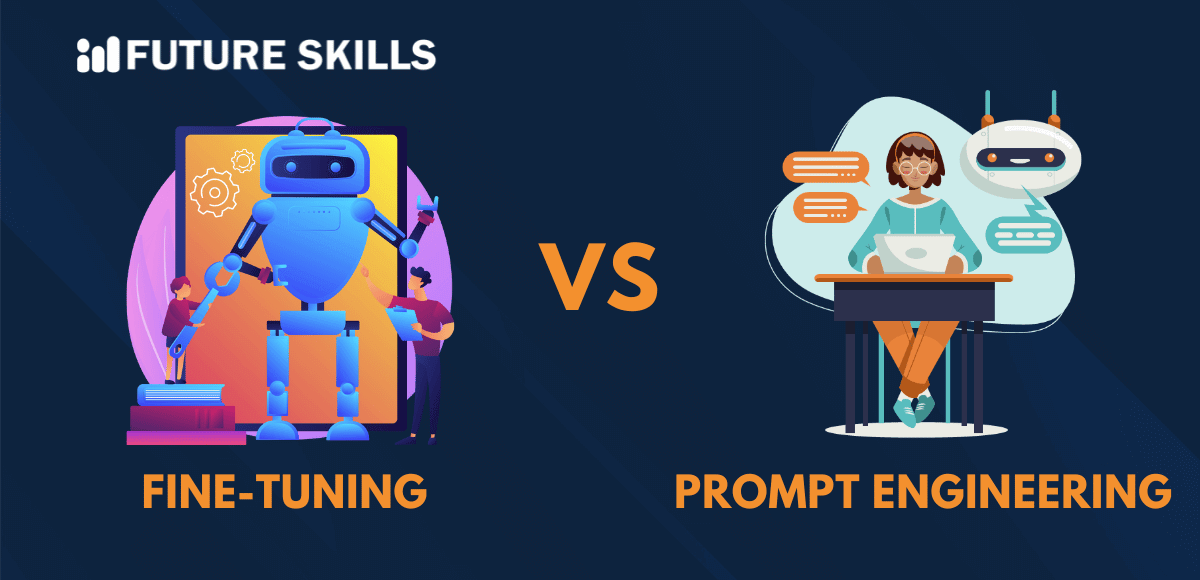Large Language Models, or LLMs, are the most powerful AI systems that you can use for language translation, generating text, solving coding problems, and many other tasks. However, apps that use LLMs are vulnerable to hacking attempts. You might have some doubts regarding the potential risks of vulnerabilities in LLMs. How can security breaches of AI chatbots affect you? It is important to remember that prompt hacking of large language models can lead to prompt leaks and prompt injection attacks.
Prompt injection involves disguising malicious prompts as genuine prompts for LLMs that rely on user instructions for learning. On the other hand, prompt leaks can result in disclosure of system prompt that guides the LLM-based apps. Prompt hacking is a new security challenge for LLMs and AI systems that involves manipulation of prompts for LLMs. Let us learn more about prompt hacking and its negative implications.
Why Should You Worry about Prompt Hacking?
The first thing you need to learn about prompt hacking is the novel nature of such attacks. LLMs have played a crucial role in transforming different fields and bringing AI closer to the general public. You can interact with AI tools in natural language for different tasks, such as writing an essay or generating code. However, it is important to know why queries like “What is prompt hacking?” have gained prominence in recent times.
Prompt hacking works on the principle of exploiting the way in which LLMs work. LLMs rely on prompts to understand user instructions. Hackers can use malicious prompts to manipulate LLMs and generate harmful content or perform actions they were not supposed to do. Here are some of the notable reasons for which you should worry about prompt hacking.
-
Real World Threats
The notable examples of prompt hacking in the real world have offered a strong reason to think about its impact on the future of AI. One of the most popular examples that showcases prompt hacking of LLM apps is the prompt injection attack on Microsoft Bing Chat. A student from Stanford University tricked the popular chatbot into disclosing its source prompt. Similarly, ethical hackers from Georgia Institute of Technology found a way around the safety filters of LLMs in 2022. The experiment created concerns regarding the possibility of using LLMs to generate offensive content and spread misinformation.
-
Financial Damage
Artificial intelligence is still in the stages of infancy after years of development. The impact of security breaches on LLMs leads to substantial financial losses. On top of it, businesses are likely to lose their reputation after suffering from a security breach. Therefore, it is important to understand the urgency of learning about prompt hacking to come up with effective solutions.
-
Exponential Growth of LLMs
Another important reason to learn prompt hacking is the exponential growth of LLMs. According to OpenAI, the number of parameters in LLMs is increasing by two times every six months. As LLMs become more advanced, developers might have to make certain tradeoffs in terms of security. In addition, hackers always look for new opportunities to exploit the vulnerabilities of LLMs.
Our accredited AI Certification Course can help you reach new heights of success in the domain of AI. You will get an in-depth understanding of how AI works in different industries. Enroll today!
What is the Best Explanation for Prompt Hacking?
Prompt hacking is a new security challenge for LLMs and AI systems that involves manipulation of inputs to LLMs for extracting specific responses. The impact of prompt hacking can range from obtaining satirical responses to malicious attempts to gain unauthorized access to sensitive information.
The explanations in a prompt hacking guide would help you understand how prompt hacking can help hackers spread misinformation and bypass content filters. It is a formidable threat to LLMs as prompt hacking involves exploitation of the core capability of LLMs, i.e., understanding user instructions for specific tasks.
The continuously growing integration of LLM models in the digital landscape, including social media platforms, education and research tools, and search engines, creates a broader target for hackers. As the scalability of LLMs gains momentum, the possibilities for misuse also increase by huge margins.
Another crucial aspect of the fundamentals of prompt hacking explained to beginners is the development of a complex layer of risks for users, developers, and researchers. The need to learn about prompt hacking revolves around securing the integrity of LLMs in the absence of a proven solution.
How is Prompt Injection Relevant to Prompt Hacking?
Prompt injection is a prominent variant of prompt hacking that can disrupt the functionality of LLMs. The manipulation of prompts fed to LLMs can lead to AI systems breaking down and undertaking actions that don’t align with their intended functions. The answers to ‘What is prompt hacking?’ create doubts regarding the sophistication of large language models. However, a simple prompt injection attack can make an LLM-based app function completely differently.
The two most prominent categories of prompt injection serve as the foremost examples of prompt hacking. Large Language Models are vulnerable to direct and indirect prompt injection attacks, thereby creating setbacks for their long-term adoption. Here is an overview of the threats raised by different types of prompt injection techniques for LLMs.
-
Direct Prompt Injection
Direct prompt injection is a notable technique for prompt hacking of large language models in which hackers use explicit prompts to manipulate the output of the model in their favor. For example, hackers can use malicious information as input to trick the model into revealing sensitive data. Direct prompt injections affect the response generation capabilities by exploiting the trust inherent in the validity of inputs.
-
Indirect Prompt Injection
Indirect prompt injections are more threatening than direct prompt injections due to their negative impact. The premise of indirect prompt injection revolves around manipulation of the context or the environment in which LLMs operate. Examples of indirect prompt injection techniques for prompt hacking of LLM might include changing the content the model uses for training. For example, hackers can misguide LLMs by referring to malicious web pages or documents to generate responses.
Boost your AI expertise with our professional Ethics of AI Course and understand the significance of AI ethics and its challenges.
Why is it Important to Learn about Prompt Injection?
Prompt injection is a crucial security issue for LLMs as the effectiveness and credibility of LLMs depend on accuracy of their results. Prompt injection attacks can inflict formidable damage on the confidence of users in AI technologies. The risks of prompt injection in prompt hacking explained for beginners would be more visible in areas that depend on trust and precision. For example, online moderation and education need more precision and credibility in responses to AI systems.
The vulnerability of LLMs to prompt injection can lead to broader societal and ethical risks. Hackers can misuse prompt injections to execute phishing schemes. Therefore, the integration of LLMs in different aspects of society can lead to a broader impact of prompt injections. You can address such issues by improving the ability of LLMs to identify and neutralize malicious inputs.
Is Prompt Leakage a Type of Prompt Hacking?
The overviews of prompt hacking also shed light on prompt leakage as a prominent issue alongside direct and indirect prompt injections. It is an important element in any guide to learn prompt hacking as it presents another set of unique challenges to the integrity and security of LLMs.
Prompt leakage focuses only on unauthorized disclosure of internal data of a model that is used during the training process. You can think of it as a type of reverse engineering in LLM operations to make the LLM reveal its sensitive data or training process that guides the responses of the model.
How Does Prompt Leakage Work?
Prompt leakage is directly associated with the attempts to extract confidential information gained by the model. The sensitive data comes from comprehensive training of the model on large datasets. Hackers can use specially designed prompts to make LLMs reveal confidential details. As a result, a prompt hacking guide showcases the detrimental impact of prompt leakage LLMs.
Prompt hacking can transform LLMs into platforms for exposing sensitive data. Prompt leakage does not require any technical knowledge. Anyone capable of creating sophisticated prompts can carry out a prompt leakage attack. On top of it, real-world examples have proved that prompt leakage can expose different parts of the underlying logic of AI systems.
Prompt leakage can lead to exposure of biases, ethical oversights, and vulnerabilities in the training process of a model. Hackers can use it as a resource to create a roadmap for exploiting or manipulating the model in the future. It is important to familiarize yourself with prompt leakage because it can undermine the security safeguards for LLMs.
Final Words
The comprehensive understanding of the two most common types of prompt hacking, prompt injection, and prompt leakage, helps in evaluating the magnitude of their threat. LLMs have become an important part of people’s everyday lives and are integral elements for enhancing business workflows.
You should familiarize yourself with the techniques for prompt hacking of large language models to avoid its negative consequences. Unauthorized access to the sensitive data behind the operations of LLMs can empower hackers to exploit the models for malicious purposes. Learn more about prompt hacking techniques and the best practices for preventing prompt hacking attacks right away.
Enroll in our Certified Prompt Engineering Expert (CPEE)™ program and learn all the ins and outs of prompt engineering. This course will help you become an expert in writing precise prompts to get the desired results.






